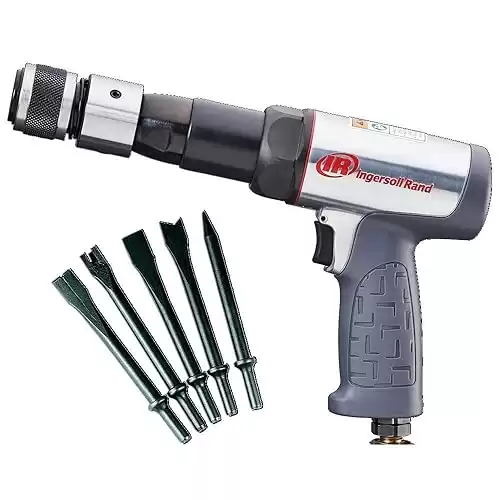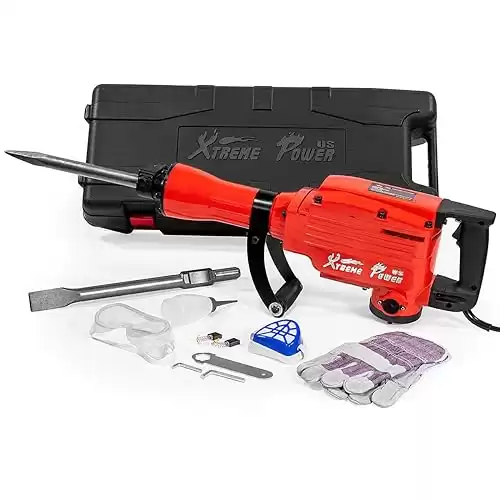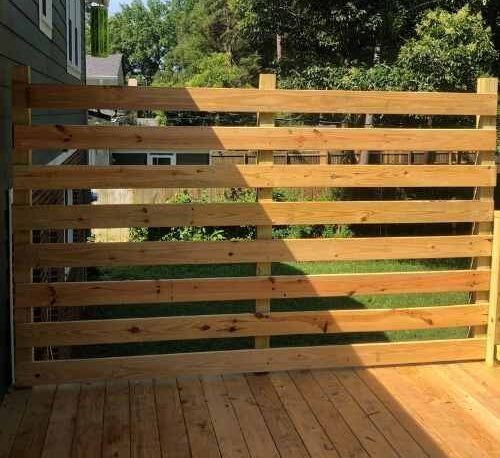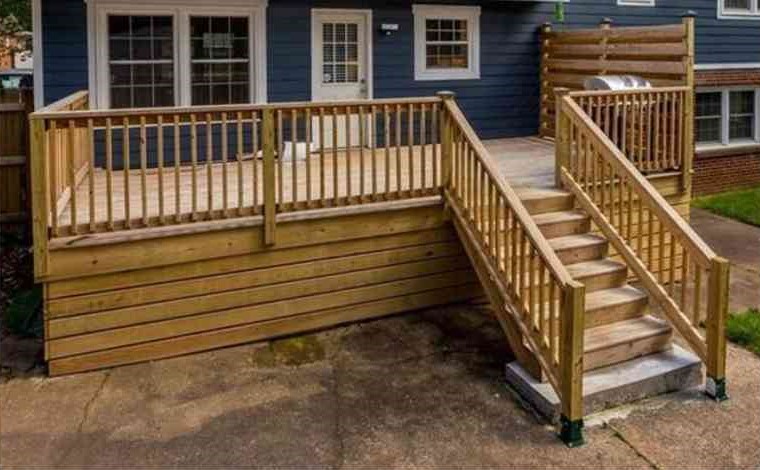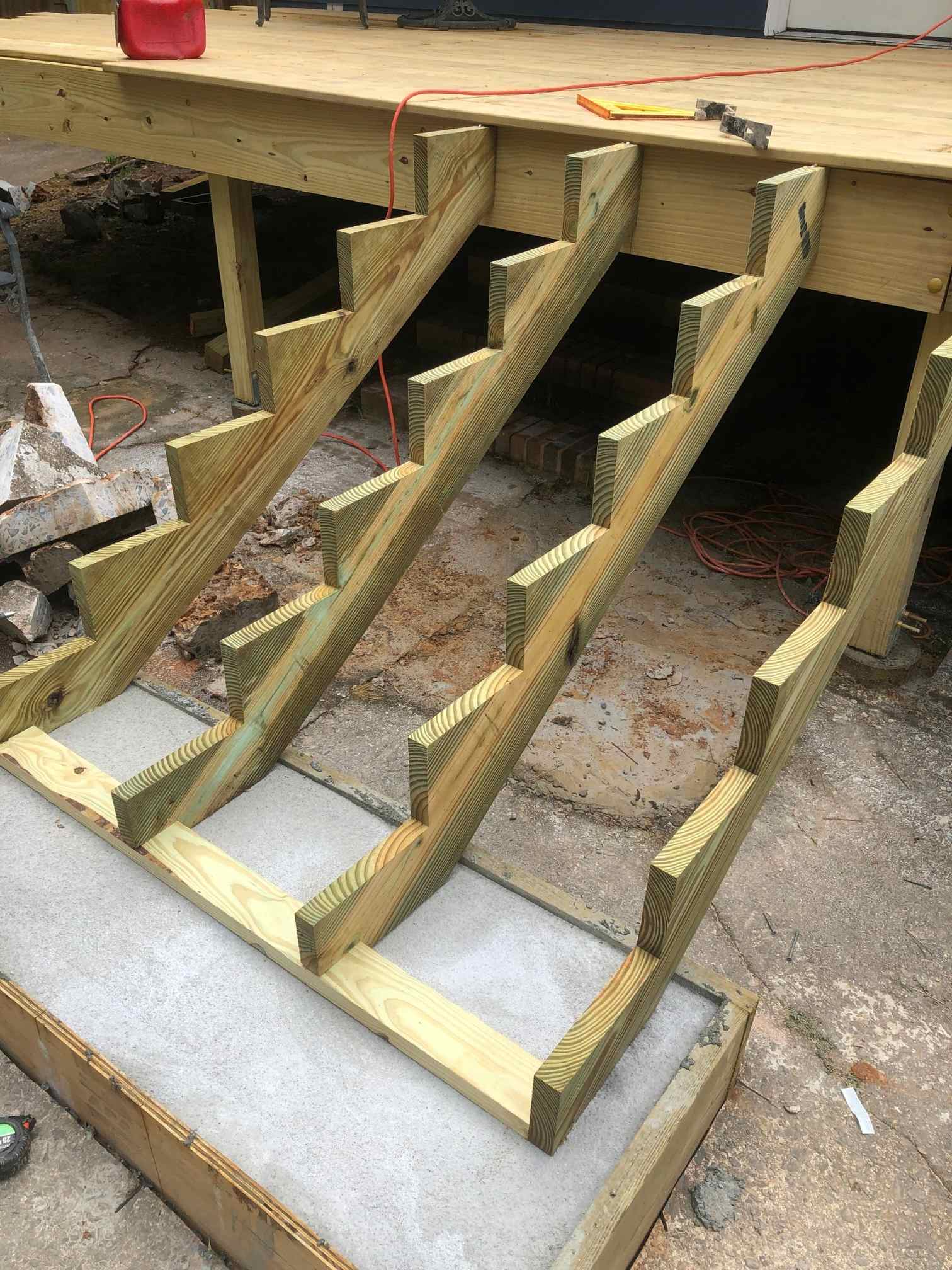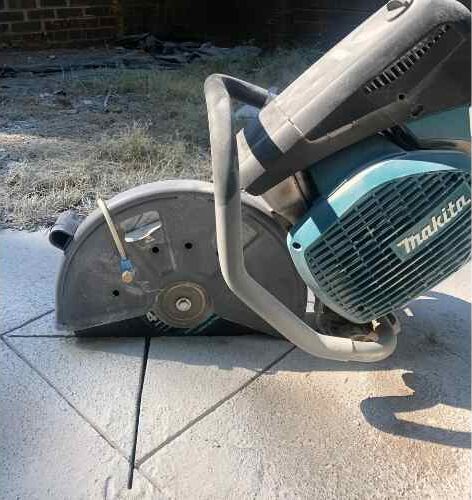
Cutting a hole in a concrete slab may seem like some monumental task. After all, it’s concrete! Don’t I need a sledgehammer? Don’t I need to hire a professional? Isn’t concrete permanent?
No. No. And No.
Whether it’s a hole in a concrete patio, concrete slab, or concrete foundation, a hole can be cut with just a few tools, careful planning, and a little know-how.
What you’ll need..
-
 Check Price
Check PriceYou can also rent a concrete saw from home depot, but be sure to buy the blades on amazon to save money.
We earn a commission if you make a purchase, at no additional cost to you.
-
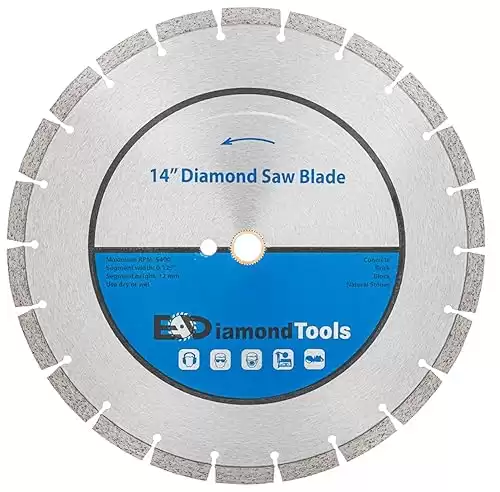 Check Price
Check PriceIf you're renting a concrete saw, buy this blade off of amazon beforehand. The blades are more expensive in-store at Home Depot or Lowes.
We earn a commission if you make a purchase, at no additional cost to you.
How to Cut a Hole in Concrete Step-By-Step
- Plan precisely where the cuts need to be made- make sure to identify the absolute center point of the hole that needs to be made.
- Outline your hole (ha!), and cuts- I would outline the hole in one color and the cuts needed to be made in another color.
- Make your first cut– for a square you’ll more than likely need to make two large cuts diagonally across the square, don’t sweat over cutting too much, it’s a necessary evil. Cut until you feel the blade touch soil.
- Use the air chisel to break apart the concrete pieces- this part sucks, not gonna lie. You’ll have to chisel down between two pieces using the cuts you made, and pry using the air chisel (tip, get a large purchase point with the air chisel and use a pro bar for more fulcrum and easier demo)
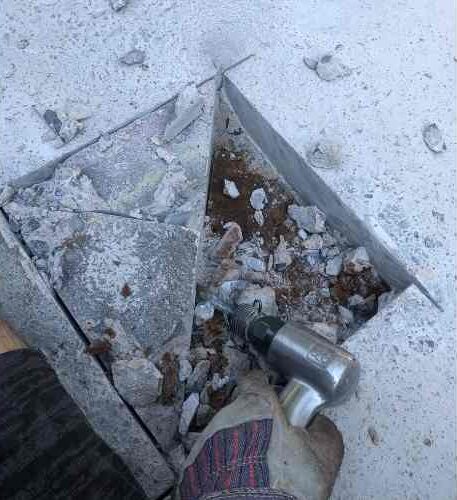

Giveaways, Ebook, and Forum coming soon. Be the first to know about new content!
Why do I need to cut a hole in concrete?
Deck Footings
I needed to cut a hole in the concrete for my deck footings. Although there are pre-made deck footings on the market, because I was building a deck over concrete, this was the only way could achieve an even, level surface for the 4×4 posts to sit on.
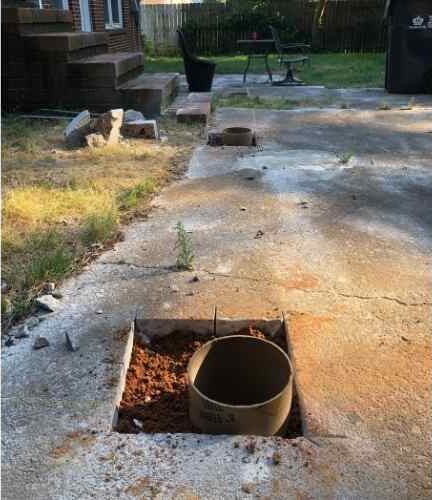
Cutting a hole in a concrete slab for plumbing
You may be installing new plumbing, or need a plumbing repair in a house with a concrete slab. Unfortunately, since the pipes were set into the concrete slab it’s necessary to have to cut a hole or trench in the concrete slab in order to make the repair.
Tearing up an existing patio
It may be necessary to cut a hole in a sidewalk or concrete patio in order to remove it. Cutting a hole in the concrete will enable you to make a purchase point to tear up the rest of the patio. If you are tearing up a large concrete patio, I would recommend a demolition tool.
For medium to large concrete tear-outs. This tool also makes quick work of a bathroom demo.
The air chisel works great for precise work on small holes (round holes or under 4’X4’). A small jackhammer is a better option for larger tear-outs.
What To Expect
- Dust– There is no way around this, there will be lots of dust. Wear a mask and eye protection. Just be prepared for your neighbors to check in on you and wonder what’s going on, and you’ll probably need to hose off the area after you’re done.
- Noise – concrete saws are terribly loud, you’ll need earplugs.
- Water– Concrete Saws use water to lubricate the area they’re cutting. Expect to receive some splashback while cutting.
- A Boo Boo – cutting the holes will leave you with jagged edges on heavy, broken concrete. I recommend wearing a pair of cut-resistant gloves to minimize scrapes and cuts from the broken concrete.
To Conclude
Like I said before, you can expect this to suck. It’s not going to be an easy task, but cutting a hole in concrete is often necessary to get the job done correctly.
Make sure to be well versed operating of the concrete saw before using it. Concrete saws are dangerous and can be hard to handle at times.
I hope this step-by-step tutorial gave you some key points to consider, and aids you in your renovation. Good luck!

Max
Max Lowrie, founder of MySplitLevel.com® and author of The Live In Flip© bought his first split level house in 2016. During a lengthy renovation, Max noticed that there was little useful content online specific to split-level homes. Max now devotes his time to share his knowledge hoping to help homeowners avoid unnecessary mistakes, and provide a blue print for split-level owners nationwide.
Giveaways, Ebook, and Forum coming soon. Be the first to know about new content!
